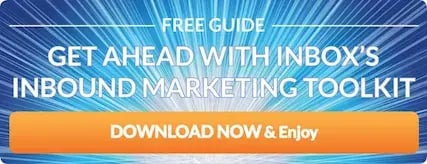Best Practices For Website Forms

Optimizing Website Forms Means Better Marketing Results

According to Marketing Sherpa, 56% or marketers consider optimizing their website form logic to have a massive impact on their website's performance.
What are the benefits of website forms to marketing?
A website form is a series of questions that are usually hosted on a landing page. Forms are a way for a website to collect a site visitor's information. Once their information is collected, they become a contact inside of your database.
Website forms help you to convert, close and delight your website visitors - your buyer personas - into happy customers. Without a website form, you're unable to convert any traffic into leads. This is one of the reasons why some marketers wonder that they have tons of traffic, but no leads. The reason is that they either don't have forms, or they aren't using them right. Remember, the second that a website visitor fills out a form and submits it to get your offer, they're a contact inside your database, which is a lead.
After you get a lead, you want to close them into customers and delight them into promoters. You can also:
- Use the information from website forms to create remarkable content moving forward, so you can close your leads into customers at a higher rate, and also delight them into promoters.
- Segment your lists based on what people put into those forms. This helps you to create better email and marketing communication.
- Create great lists that are hyper-focused on a specific segment. You can use this information to also personalize emails, like "Hi, ."
- Have you ever gotten a happy birthday from a company? This kind of delight is possible when information is collected in a form field.
Best Practices For Creating Website Forms
Gather Information You Need And Want To Capture
On website forms, some of the generic information that you need is:
- First Name
- Last Name
- Company
- Website URL
If you want to go from good marketing to great marketing, ask a question like, "What is your team's biggest challenge?" Some of the other great questions that you may want to know about your potential customers can be around:
- Budget
- Location
- Job Role
- Industry
- Biggest Challenge or Problem
Having a purpose will guide you to be successful. That means having a goal for asking questions on a form. The reason you want to ask questions that go beyond the generic is because it will help you in one or more of these three areas:
1. Immediately Qualify A Lead
What does qualifying a lead mean anyways? Qualifying a lead - also referred to as greenlighting a lead - means that you know information about them, so you can determine that they are, in fact, worth pursuing further. You need to know if they can buy. How important are qualified leads? They're gold to you.
2. Bucket Them Into A Buyer Persona Segment
Bucket them into meaningful groups that you're already aware of and can market to in meaningful ways. This will help you to know what language to use in your email communication, and also what content to provide them with.
3. Learn About Your Contact's Situation - Their Needs, Desires or Concerns
Use your forms to learn about your website visitors are looking for in your product or service. If your offer's valuable, you should be able to ask a question or a few questions to better understand their situation.
Build Forms Based On Perceived Value Of Your Offer
Now that you have a bunch of questions that will help build out your marketing and sales team, you want to start building out your form. You need to be strategic with the questions you ask and where you place those questions. There is no perfect formula for the number of form fields. Consider how valuable your offer is to your potential contact. Are your questions to invasive, or are they just right for your offer? Put yourself in your new lead's shoes. How does the length feel? Also, how about the questions you're asking? Do they make sense?
Your Forms Need To Follow The Buyer's Journey:
Awareness > Consideration > Decision
Consider the buyer's journey, as offers there, loosely translate to different values. The buyer's journey is simply the research process that your potential customer goes through leading up to their purchase. People don't wake up one day knowing about your organization - they find them through the research process. Your potential leads are at all different stages of this buyer's journey. You want content offers at all different stages, so you have content to offer somebody no matter where they are on the buyer's journey.
Interestingly, as people start their journey and work through it towards the end, offers often increase in value as they reach the Decision stage. This is because offers in the Awareness stage are helpful to newcomers to the problem. The content that is offered here is usually ebooks, tip sheets, white papers, guides and are usually generic in nature. The content is not made 100% to be tailored to that organization.
Then, as they become more educated, they work towards purchasing. Offers usually become more high touch, ending with consultations, custom quotes, free demos and trials that are incredibly valuable. Thus, it's all right to ask for more information in return for these offers. The further someone goes into the buyer's journey, the more valuable and high touch offers become.
